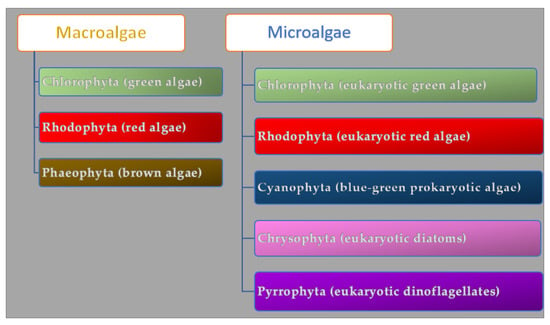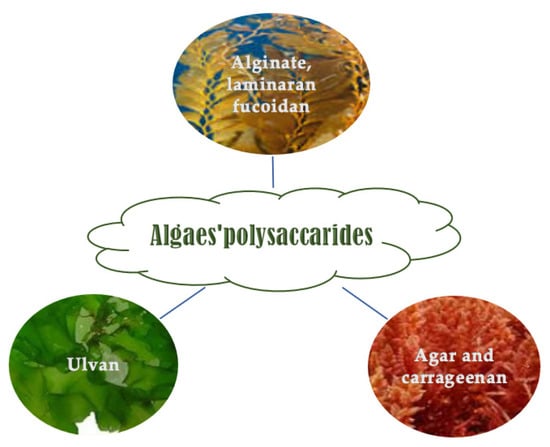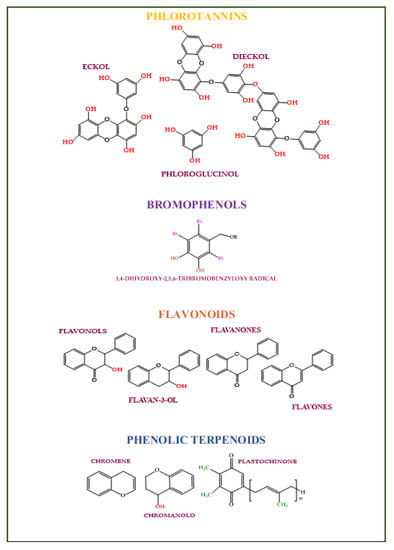The main goal of the Circular Economy is to reuse and recycle natural resources to minimize health, energy, and environmental impacts. The European citizen produces around 5 tonnes of waste, much of which finishes in incinerators or landfills, and a little is recycled [
1]. Waste management policies have been investigated to avoid landfills and allow the recovery of renewable energy and recycled materials [
2]. Organizations have developed circular waste management systems, promoting resource flow and enhancing product sustainability and processes [
3]. Consumption of eco-friendly products and decreasing waste are crucial to achieving the European sustainable goals. Ten megatrends were recognized for 2022 by New Nutrition Business for food, nutrition, and health. Sustainability came fifth [
4]. Representative population surveys indicate that many people (amongst them young consumers) wish to contribute to sustainable development [
5,
6,
7,
8,
9,
10]. Buying eco-friendly products is considered one way to intervene. In the European Union, 26% of consumers purchase eco-friendly products, and 54% rarely use such items [
11]. The global market value of natural and organic skincare products will probably grow from 9.9 billion dollars in 2021 to 20.4 billion dollars by 2030 [
12]. The organic segment (made from plant ingredients that have been grown in soil free of fungicides, pesticides, synthetic fertilizers, and herbicides, and genetically modified organisms) was valued at $28,323.2 million in 2021 and is expected to reach $74,058.5 million by (CAGR of 9.8%) [
13]. This data supports the significant contribution of the cosmetics market worldwide to environmental sustainability. The seaweed waste (e.g., beach-casts) [
14] and invasive species valorization [
15], which are of no commercial value and must be disposed of in landfills, could represent an eco-friendly, attractive low-cost source for supplements and cosmetics formulations. Some scientific studies have shown the potential skincare properties of algae bioactive metabolites [
16,
17,
18,
19]. In seaweeds are found compounds with low allergen and cytotoxic profiles [
20], such as peptides, polysaccharides, fatty acids, vitamins, carotenoids, phlorotannins, tocopherols, phycobilins, phycocyanins, and sterols [
21,
22,
23,
24] that can act as antioxidants, photoprotective, moisturizing, anti-inflammatory, antiallergic, anti-acne, anti-wrinkling, antiaging, antimicrobial, and whitening bioactive compounds [
25,
26,
27,
28].
2. Nutricosmetic Revolution
The term “nutricosmetic” indicates the association of food supplements and cosmeceuticals to improve skin care. Nutricosmetic formulations optimize the intake of nutritional macro and micro elements to meet the demands of the skin and appendages, improving their conditions and delaying aging [
29,
30,
31]. A food supplement is a consumer product that aims to supplement the regular diet. Products based on vitamins, minerals, antioxidants, and extracts of vegetable origin, single and multi-compound, in pre-dosed forms with nutritional power or biological effect, fall into the vast category of food supplements [
32]. Cosmetics represent a highly heterogeneous category of daily-use consumer products. In the European Union, Regulation (EC) no. 1223/2009 in Article 2 defines “cosmetic product” as “any substance or mixture intended to be applied on the external surfaces of the human body (epidermis, hair system, and hair, nails, lips, external genital organs) or the teeth and on the mucous membranes of the mouth for the sole or primary purpose of cleaning them, perfuming them, modifying their appearance, protecting them, keeping them in good condition or correcting body odors” [
33]. A substance or mixture intended to be ingested, inhaled, injected, or implanted in the human body is not considered a cosmetic product. Nutricosmetic formulations combine the two previous formulations’ beneficial effects through an integrated “in and out” approach.
3. Algae (Seaweeds)
Algae are a group of photosynthetic organisms that differ in structure and size. They can grow in freshwater, marine water, deep oceans, and rocky shores. The bionetwork comprises 36,000 different kinds of algae. The seaweed macroalgae are multicellular organisms rich in lipids and proteins (40% and 71% of their dry weight) that can measure from a few centimeters to a meter, while the microalgae are microscopic unicellular carbohydrate-rich organisms [
34]. Macroalgae are grouped in Chlorophyta (green algae), Phaeophyta (brown algae), and Rhodophyta (red algae) according to their pigment and chlorophyll profile (
Figure 1).
Figure 1. Algae classification.
Microalgae are classified as prokaryotic and eukaryotic and, according to their color, subdivided into Cyanophyta (blue-green prokaryotic algae), Chlorophyta (eukaryotic green algae), Rhodophyta (eukaryotic red algae), Chrysophyta (golden eukaryotic diatoms), and Pyrrophyta (brown eukaryotic dinoflagellates) [
35]. The chlorophyll responsible for the green color of the algae
U. lactuca,
C. vulgaris is employed as an antioxidant bioactive compound in cosmetics. Beta-carotene found in
D. salina [
36] and the red protein phycoerythrin found in red algae (e.g.,
Porphyra,
Gracilaria,
Irish moss) [
37] are used as colorants in foods and cosmetics. The fucoxanthin in brown algae (
Laminaria digitata,
Isochrysis spp.,
Postelsia palmaeformis) prevents skin aging (by supporting collagen production and moisturizing skin) and has anti-inflammatory and tyrosinase inhibitory effects [
38]. The algae metabolites’ composition is associated with internal factors (i.e., type and species), external factors (i.e., water temperature, water composition, salinity gradient, time of year, organism age), and cultivation conditions such as size and type of cultivation reactor [
39]. During stress conditions, algae produce organic phenolic and phlorotannin and improve the uptake of inorganic ions to protect them from UV lights and desiccation. [
40]. The wave exposure, environmental gradients, and algae reproductive cycles affect carbohydrate profile and content [
41]. Chemicals (e.g., pH, carbon dioxide, salinity mixing/aeration), physical parameters (e.g., light, radiation, temperature), carbon sources (e.g., organic carbon like sugars and CO
2), nitrogen, salts, phosphorous, and vitamins affect the algaes’ growth [
42]. Microalgae can be grown autotrophically, heterotrophically, and mixotrophically. Cellular self-shading and low light availability negatively affect biomass production during autotrophic nutrition. Inorganic carbon sources can enhance biomass concentration and photosynthetic activities [
42]. Organic substrates such as sugars, organic acids, etc. (heterotrophic nutrition), give rapid growth, low harvesting costs, and high biomass production [
43]. The high cost of organic carbon sources, substrate inhibition, contamination, and the low number of microalgal species that can be grown in this way limit heterotrophic nutrition [
44]. Mixotrophic algae can photosynthesize, assimilate, and metabolize organic carbon and are less dependent on light penetration for higher cell densities than autotrophy ones. During dark respiration, they manage biomass decrease, using lower organic substrate amounts than heterotrophic growth and enhancing the synthesis of the PUFA (polyunsaturated fatty acids) [
44,
45,
46]. Algae can improve air quality by fixing CO
2 [
47] (they are responsible for 50% of the photosynthesis on earth) [
48] and are an alternative source of bioenergy production since they produce biofuels [
49]. Finally, they can reduce pollution [
50] by converting water and CO
2 into organic matter [
51].
4. Algae Metabolites
4.1. Polysaccharides
Marine macroalgae are good carbohydrate sources (mainly polysaccharides and low concentration of disaccharides and monosaccharides) whose content is from 5 to 75% (
w/
w, DW) based on the age, period, species, and harvesting site [
52,
53]. Polysaccharides in seaweeds can be sulfated and non-sulfated [
54]. They constitute the algae cell walls and are species-specific (
Figure 2) [
55,
56]. They have some technological, rheological, and biological activities. They can have a prebiotic effect and improve gut human microbiota performance [
57].
Figure 2. Polysaccharides occurrence in the function of algae class.
4.1.1. Brown Algae Polysaccharides
Brown macroalgae are composed of sulfated and branched α-
l-fucans containing predominantly sulfated
l-Fuc
p (<90%), other monosaccharides (e.g.,
d-Man
p,
d-Gal
p, and
d-Xyl
p), and uronic acids (
d-GlcA
p and
d-GalA
p). Brown algae polysaccharides have antioxidant, antiinflammatory, and antibacterial activity against
E. coli,
S. epidermidis,
S. aureus, and
B. licheniformis [
58,
59].
Ascophyllans (xylofucoglucuronanes) have a poly-(1→4)-β-
d-glucuronan skeleton linked to
l-Fuc
p and
d-Xyl
p sulfated in position C-4 [
60].
Sargassans (glucuronofucogalactans), identified in the genus
Sargassum (e.g.,
Sargassum linifolium), have a poly-(1→4)-β-
d-glucuronan skeleton linked with
d-Man
p residues [
61].
Fucoidans have low shear-thinning performance and low viscoelastic physical characteristics (they are affected by monovalent and divalent salts) [
62]. They are biocompatible, non-toxic, biodegradable [
63,
64], and have antioxidant and antiradical properties [
65,
66,
67,
68]. Fucoidans can promote skin firmness, elasticity, brightness, hair growth, safety, cleanliness, rigidity, and gloss [
69]. They prevent and treat skin photoaging, decreasing wrinkle-related enzymes (e.g., collagenase, gelatinase, elastase) [
70,
71,
72], improving collagen synthesis [
73], controlling matrix metalloproteinases and avoiding the extracellular matrix’s ruin [
74,
75,
76,
77].
Laminarins (also laminarans), identified in
laminaria present in the North Atlantic, have a degree of polymerization of 15–40 and molecular weight (M
w of 2–10 kDa). They are β-(1→3)-
d-glucans. The laminaribiosis are the diholosidic repeating unit consisting of β-(1→6)-
d-Glc
p [
78]. Laminarins are biocompatible, have low cell toxicity, are biodegradable, and show some bioactivity, such as anti-inflammatory, antioxidant [
79] anti-photoaging and regenerative abilities [
80].
Alginate(s) are polysaccharides composed of α-
l-guluronic acid (
l-Gul
pA) (
1C
4 ring conformation) and (1→4)-β-
d-mannuronic acid (
d-Man
pA) (
4C
1 ring conformation) [
81] arranged in both homogeneous and heterogeneous blocks [
81]. Alginates are used in the food, feed, cosmetic, and drug industries as gelifying and thickening agents, and bioactive molecules against allergy [
82] and obesity [
83,
84].
4.1.2. Red Algae Polysaccharides
Red algae (Rhodophyta) contain water-soluble sulfated galactan (e.g., agarocolloids and carrageenans), constructed based on (1→4)-α-Gal
p and (1→3)-β-Gal
p units [
53]. Carrageenans have gel and texture properties. They are the fourth principal hydrocolloids used by the food industry, after starch, gelatin, and pectin [
85].
Sulfated dioside are linear polymers of carrabiosis that can contain 4-α-
d-Gal
p and 3-β-
d- Gal
p, other monosaccharides (Xyl
p, GlcA
p, Glc
p, and GalA
p), methyl ether groups, and pyruvic acid ketals. They are extracted from
Agardhiella,
Eucheuma,
Chondrus,
Gigartina,
Furcellaria, and
Hypnea [
53,
86].
Agarans are sulfated galactan containing 4-α-
l-Gal
p [
87]. Agarans based on the percentages of 3-6-α-
l-AnGal
p residues and sulfate groups are defined agaroids that are weak gelling molecules (divided into funorans and porphyrans), and agars (high gelling molecules). Agaroids are extracted from
Porphyra species, e.g.,
P. capensis,
Porphyra haitanensis [
88], or
P. umbilicalis [
89]. Agar has cosmetic and pharmaceutical applications as a thickener agent and an ingredient to carry and release drugs in capsules and tablets [
89,
90].
4.1.3. Green Seaweed Polysaccharides
Chlorophyceae contain sulfated polyholosides [
91]. Polyholosides are distinct in sulfated xylorhamnoglycuronans, called ulvans [
92,
93,
94,
95], sulfated arabinoxylogalactans or xyloarabinogalactans (composed of Ara
f,
d-Gal
p,
l- and
d-Xyl
p units) present in the orders of Cladophorales and Bryopsidales, and sulfated rhamnogalactogalacturonanes or glucuronoxylorhamnogalactans extracted from
Ulvales [
96]. Ulvans are used as gelling [
97] and antiaging agents [
98].
4.2. Lipids
Algae contain omega-3 and omega-6 polyunsaturated fatty acids (PUFA; usually under 5%). The γ-linolenic acid, eicosapentaenoic acid, arachidonic acid, and docosahexaenoic acid are the most abundant.
Phaeophyta algae have a C18-PUFAs profile next to green algae and a C20-PUFAs profile identical to red algae.
Chlorophyta species have higher levels of C18-PUFAs than C20-PUFAs. In
Rhodophyta happen the contrary. Green algae contain higher DHA (docosahexaenoic acid) levels (e.g., Chlorophyta algae genus Tetraselmis). Finally, red and brown algae have predominantly EPA (eicosapentaenoic acid), arachidonic acid [
99,
100], and phospholipids [
101,
102,
103,
104,
105]. Polyunsaturated fatty acids can improve skin barrier protection [
106,
107] and regulate inflammatory responses [
108]. Lipids in cosmetic formulations can act as moisturizing agents (forming a waterproof film on the skin to avoid water evaporation from the surface) [
109], emollient [
110], and softening agents (they make the corneocyte’s edges smoother) [
36], surfactants [
111], and emulsifiers (they decrease the surface tension) [
112], texturizers (they improve the spreadability of gel-like products), and as color and fragrance carriers [
113].
4.3. Proteins and Derivatives
Seaweeds are a rich source of proteins (in single or conjugate form) and protein derivatives (e.g., free amino acids and peptides) [
23]. Red algae have the highest proteins and derivative contents (up to 47%), green algae have medium levels (between 9–26%), and brown algae contain the lowest concentrations (3–15%) [
114]. Protein and bioactive peptides have high antioxidant, anti-inflammatory, skin proactive, and antiaging properties [
115,
116,
117]. Pedoclimatic conditions affect the proteins, peptides, and amino acids contents in algae.
Taurine extracted from the thalli of
Euthora cristata,
Ahnfeltia plicata, and
Ceramium virgatum has antioxidant and chelating abilities [
118,
119]. The peptides (PYP1-5, and Porphyra 334) from
Porphyra yezoensis f.
coreana increase collagen and elastin levels and reduce the expression of matrix metalloproteinases (MMP) MMP-1 and MMP-8 [
120].
Mycosporine-like amino acids (MAAs) (
Figure 3) are secondary metabolites with low molecular weight (<400 Da) synthesized for protection against solar radiation and found in the cell cytoplasm [
121]. Mycosporine-like amino acids are made by cycloheximide or cyclohexenone conjugated to amino acid or an imino alcohol residue [
122]. They are extracted mainly from Rhodophyceae (e.g., shinorine, asterina, porphyra, palythine, polyphenol, mycosporine-glycine, and palythene) [
123,
124] and from
Asparagopsis armata,
Mastocarpus stellatus,
Chondrus crispus,
Gelidium sp.,
Palmaria palmata,
Gracilaria cornea,
Grateloupia lanceola,
Solieria chordalis, and
Curdiea racovitzae. This compound class has shown antioxidant, photoprotective, anti-proliferative [
125], anti-aging, and anti-inflammatory activities [
126].
Figure 3. Algaes’ mycosporine-like amino acids found in algae.
MAAs are employed as UV protectors, moisturizing, antiwrinkle, anti-roughness, and cell proliferation stimulators in personal care products and cosmetics [
127,
128,
129].
4.4. Phenolics
Phenolic compounds are secondary plant metabolites with one or more aromatic rings with one or more -OH phenolic groups (e.g., phlorotannins, bromophenols, flavonoids, phenolic terpenoid, and mycosporine-like amino acids) [
130]. They can defend algae from pedoclimatic injuries and parasite attacks [
131,
132]. The biological activities attributed to the algae’s phenolic compounds are summarized in
Figure 4 [
133].
Figure 4. Algaes’ phenols potentialities in nutricosmetic formulation.
Phlorotannins (
Figure 5) are phloroglucinol (1,3,5-trihydroxybenzene) polymerized derivatives with ether, phenyl, or 1,4-dibenzodioxin linkages [
134,
135]. They are found only in brown algae [
136]. Phlorotannins have antioxidant activity [
137,
138,
139,
140], reduce melanin synthesis, tyrosinase activity [
141,
142], damages caused by UV rays [
143,
144], and have anti-inflammatory [
145,
146], anti-proliferative [
147,
148,
149,
150,
151], and anti-adipogenic activities [
152]. Phlorotannins antioxidant power is 2 to 10 times higher than tocopherol and ascorbic acid [
153,
154]. Dieckol, eckol, dioxinodehydroeckol, phlorofucofuroeckol A, eckstolonol, and 7-phloroeckol, and decreasing tyrosinase and hyaluronidase activities can act as whiteners and antiwrinkle bioactive compounds in cosmetic formulations [
155,
156,
157,
158,
159,
160]. 7-derived phloroeckol promotes hair growth [
161].
Figure 5. The main class of phenolic compounds found in algae.
Phlorotannins from
Ecklonia kurome (Phaeophyceae) act as antimicrobial agents against some methicillin-resistant food-borne pathogenic bacteria (
Staphylococcus aureus strains,
Campylobacter sp., and
Streptococcus pyogenes) [
162,
163].
Dioxinodehydroeckol from
Ecklonia cava and fucofuroeckol-A derived from the brown seaweed
Ecklonia stolonifera Okamura can protect against UVB radiation [
164,
165].
Dieckol from
Ecklonia stolonifera and other phlorotannins have antiallergic properties [
166,
167,
168]. Phlorotannins also decrease the expression of the interstitial collagenase MMP-1 that regulates the dermal collagen’s degradation in the human skin aging process [
169].
Bromophenols (B.P.s) (
Figure 4) have one or several benzene rings with bromine and hydroxyl-substituents. They were isolated from red, green, and brown algae [
170]. Bromophenols can act as antioxidants [
171,
172,
173,
174,
175,
176], antimicrobials (against
Candida albicans [
177,
178],
Pseudomonas fluorescence, and
Staphylococcus aureus) [
179], anti-inflammatories (decreasing the IgE-mediated responses, the interleukin-6, nuclear factor kappa-light-chain-enhancer, and activator of transcription1 pathways) [
180], whitening (inhibiting the tyrosinase enzyme levels) [
181], antiobesity, anticancer, and antiosteoporosis bioactive compounds (decreasing carbonic anhydrase [
170,
182], and glucose 6-phosphate dehydrogenase activities) [
183,
184].
Flavonoids are molecules derived from the phenylpropanoid metabolism and shikimate pathway. They have a high reduction potential and scavenging activity [
185]. Flavones (e.g., luteolin, apigenin, chrysin, and baicalein) were isolated in the
Ulva intestinalis and
Cladophora vagabunda green seaweeds [
186] and
Phaeocystis globosa red alga [
187]. Catechins (e.g., epicatechin and epigallocatechin) were detected in the
U. pinnatifida brown seaweeds [
188]. Flavonols (e.g., rutin, quercitin) in
Chlorophyta,
Rhodophyta, and P
haeophyceae species [
136]. Isoflavones (e.g., daidzein or genistein) are present in red macroalgae (
Chondrus crispus and
Porphyra/
Pyropia spp.) and brown seaweeds (
Sargassum muticum and
Sargassum vulgare) [
189,
190].





